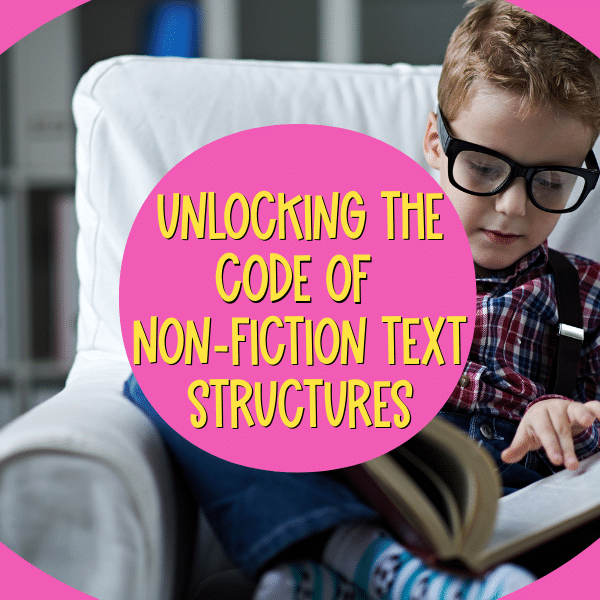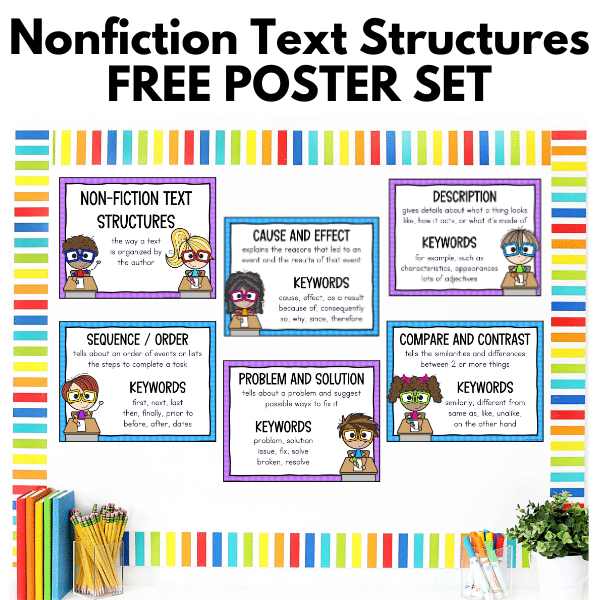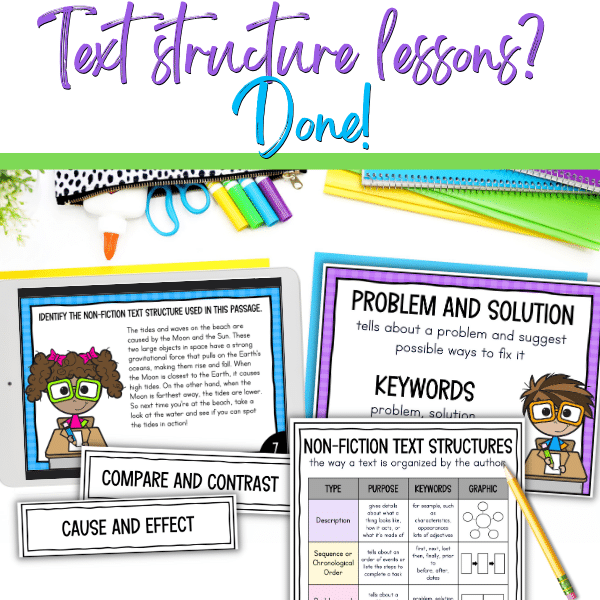Understanding how authors organize information writing with nonfiction text structures is essential for comprehension, but I have found that this is one of the things in the curriculum that my students have the hardest time mastering. Many students may overlook the structure of a text and focus on the content, which could lead to confusion and misunderstandings. To help us all out, I’ve defined the different types of text structures found in non-fiction writing and gathered a few fun and practical activities to help students understand and practice identifying text structures when they are reading non-fiction passages.
What are Text Structures?
The first step in teaching text structures is to define and practice recognizing them. There are five different structures that students should be familiar with: Sequencing, Cause and Effect, Compare and Contrast, Problem-Solution, and Description. A great way to teach this is by using a chart that illustrates each text structure and provides examples of non-fiction texts that use that specific structure.
The Compare and Contrast Text Structure:
Compare and Contrast text structures are excellent for helping students examine two or more subjects in detail and analyze their differences and similarities. Students can practice using this structure by discussing two different animal species, two famous people, or two types of landforms by comparing and contrasting them. Don’t forget to have students apply this concept by looking for it in non-fiction texts.
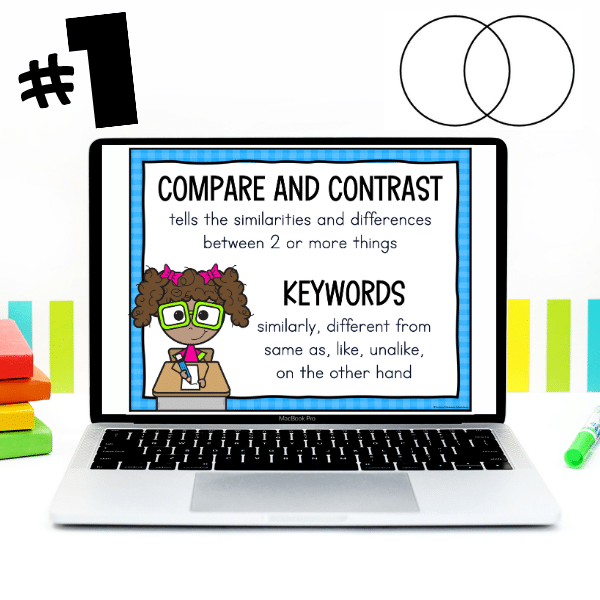
The Problem and Solution Structure:
Problem and Solution structures help students understand an issue, its various factors, and possible solutions. Make this structure come to life for students by presenting them with various real-life problems, such as cybersecurity or pollution, then work together to come up with potential solutions. I have found that my students grasp the idea of problems and solutions easily, but then struggle to notice this structure in non-fiction reading passages or confuse it with the cause and effect structure. The solution to that problem? Patience and practice!
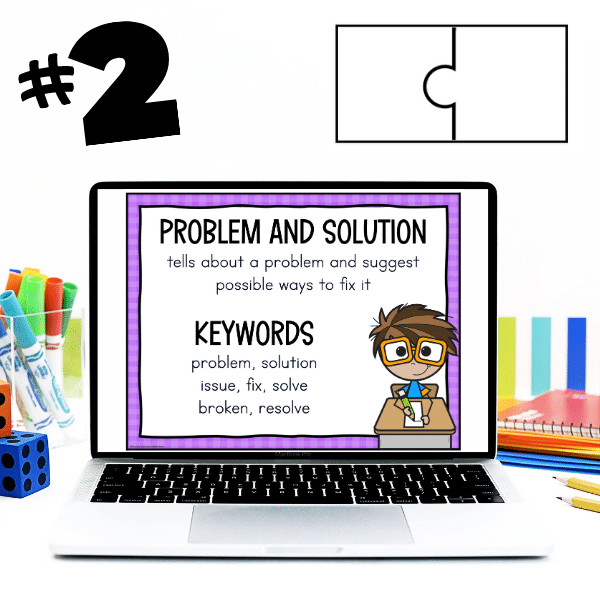
The Sequencing Text Structure:
Sequencing text structures are essential for understanding the order of events in non-fiction passages, such as a recipe, a natural process, or a historical event. You can show students your favorite dinner recipe with the steps all mixed up and ask them to sequence the steps so they make sense. Another way to help students understand this text structure is to pick a familiar event, such as a birthday party or a trip to the zoo, and ask students to write down the sequence of events. Once they’re comfortable with the concept of sequencing, have them identify sequences in non-fiction texts.
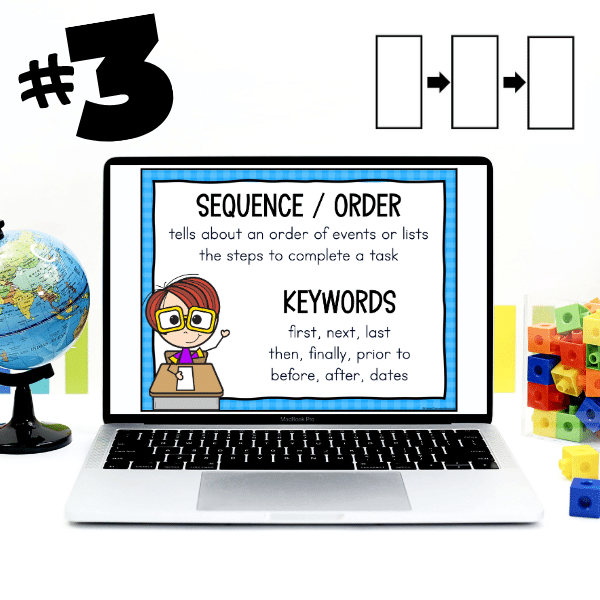
The Description Text Structure:
Description text structures are perfect for helping students visualize and understand the details of a subject. A description text explains what something looks like or does, or what it is made of. To practice give students photographs or a list of items such as animals, fruits or landmarks, and ask them to describe them with lots of detail and imagery, painting a picture with words. Encourage them to use the five senses to build a rich description. Help students notice when mental pictures are forming as they read non-fiction texts to recognize the description text structures in their everyday reading.
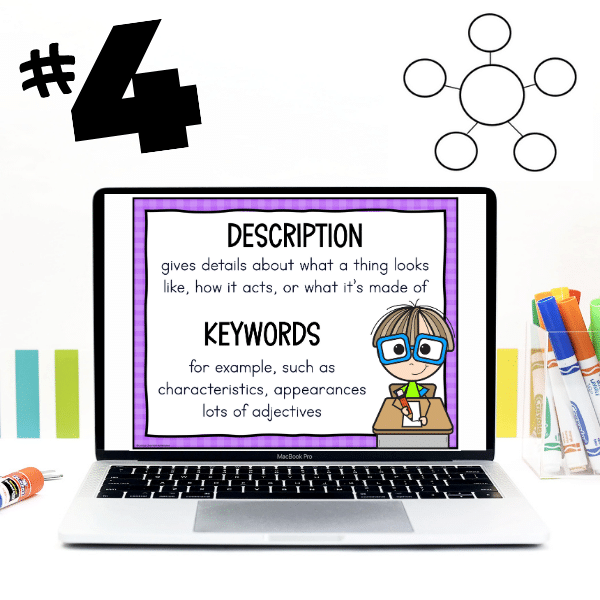
The Cause and Effect Text Structure:
Cause and effect text structures are ideal for comprehending the reasons behind a particular action. It explains the reasons that led to an event and its consequences. You can provide students with a cause and effect chart, where they can fill in the causes, and their corresponding effects. Another way to help students understand this concept is to give them a scenario, such as a field trip being canceled due to bad weather, and ask them to identify the cause and effect of the situation (or maybe several effects). Once they’ve built a little confidence, have students practice finding cause and effect structures in a non-fiction passage, such as a science or social studies textbook.
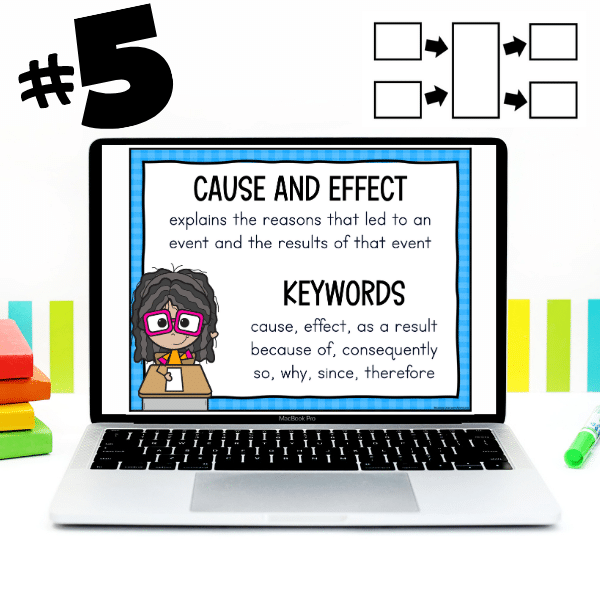
Good news! I’m sharing the posters that are highlighted in the images above. Grab this free set of Text Structure Key Word Posters.
A Few Strategies to Help Students with Text Structures
Graphic Organizers or Thinking Maps:
Using graphic organizers or Thinking Maps to help students understand text structures is an excellent way to build comprehension skills. A Venn diagram can assist students in comparing and contrasting different pieces of text. A timeline can help students understand chronological events in a text. Personally, I love using Thinking Maps better than graphic organizers to help students become really confident in recognizing every type of text structure!
Interactive Games:
Games that combine thinking and moving are an excellent way to make learning fun. I suggest “Four Corners.” In this game, the teacher tapes a label on each corner of the classroom with the different text structures. The teacher reads a nonfiction passage, and the students go to the corner that corresponds with the text structure used in the passage. The 20 passages included in this nonfiction text structures resource work great for this activity!
Non-Fiction Book Scavenger Hunt:
A non-fiction book scavenger hunt is an excellent way for students to practice identifying text structures. In this activity, students are given a nonfiction book and a list of the five text structures. Students must find an example of each text structure in their book.
Recognizing and understanding the different types of text structures that are used in non-fiction writing is key to being successful at nonfiction reading comprehension. Once students are familiar with the different text structures, they will be able to read and analyze nonfiction more efficiently. Won’t it be fun to watch them become confident at reading, analyzing, and comprehending nonfiction texts!?

